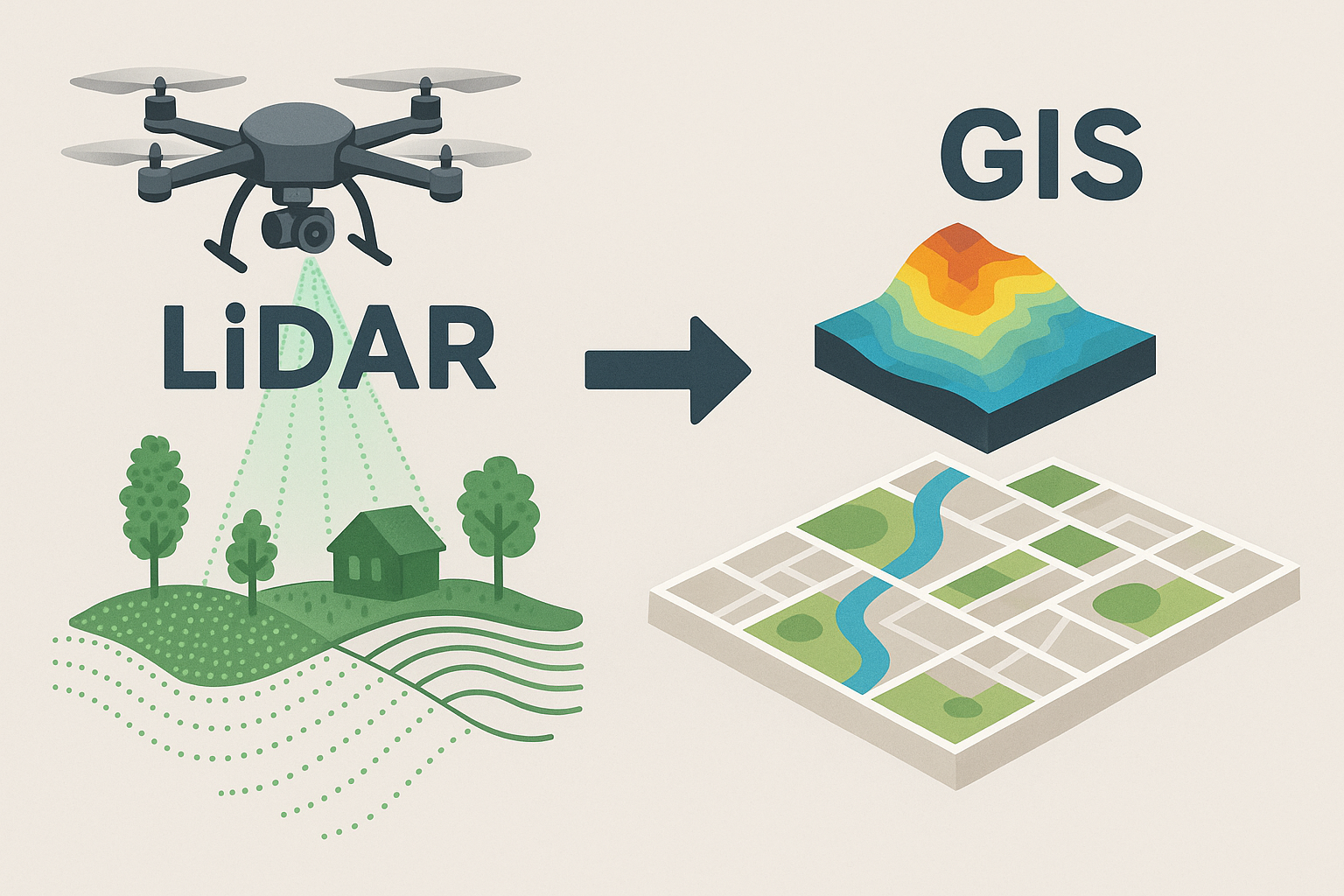Author: Vitezslav Moudry
Recent months have been marked by the completion and evaluation of student theses. It should come as no surprise that the students I have supervised have often worked with laser altimetry data in some way and that these theses are closely related to what we are doing in EarthBridge.
Two studies validated terrain data from the ICESat-2 (Ice, Cloud, and Land Elevation Satellite-2) and TanDEM-X missions, respectively, using airborne laser scanning (ALS) data as a reference. Filip Absolon focused on verifying the accuracy of terrain elevation measurements in Czechia using the ATL08 dataset derived from the ICESat-2 mission. He examined factors influencing measurement accuracy, such as cloud cover, snow cover, surface type, terrain slope, light noise, and beam intensity, and proposed a method for using these parameters to filter out accurate measurements. He concluded that ICESat-2 can provide reliable terrain height information; however, site-specific factors influencing measurement accuracy must be taken into account. Natália Obertová focused on validating the recently released TanDEM-X Edited Digital Elevation Model (EDEM) at 30 m resolution. The objective was to assess the accuracy of the TanDEM-X EDEM in the Tatra National Park and to identify factors influencing it, particularly topographic characteristics such as slope, aspect, and land cover type. In addition, the auxiliary Height Error Map (HEM) was analyzed as an indicator of model accuracy. She concluded that the lowest error values were observed in flat and open areas, while in more challenging mountainous terrain, especially on steep slopes and in dense forest stands, the errors increased considerably.
Three studies used multi-temporal ALS data. Two of them studies used data from Giant Mountains National Park (2012 and 2022). Albina Nikiforova used it to examine vegetation structure in areas of black grouse occurrence in the and its changes between 2012 and 2022. More specifically, she examined relationships between vegetation metrics (e.g., canopy height, canopy cover, standard deviation of height) around presence of black grouse in years 2010-2014 and 2020-2023 and randomly selected points where black grouse have never been recorded. She found that higher canopy height, canopy cover, and standard deviation of height were associated with lower probability of black grouse occurrence, while increasing understory proportion had a positive effect. In addition, the results suggest that between 2012 and 2022, black grouse may have been forced to use less suitable habitats, as continued vegetation overgrowth leads to a loss of optimal conditions. Although this was confirmed only in the case of canopy height.
Marie Čekanová used Canopy Height Models (CHMs) derived from the same ALS data from Giant Mountains, among several other predicted global CHMs, to assess the impact of input data quality on the accuracy of species distribution models (SDMs). She used species occurrence data affected by positional error and six CHMs representing environmental predictors with different levels of error with which they represent reality (i.e., vertical error of canopy height) to examine the interaction between errors in species occurrence data and environmental predictors. More specifically, whether these errors act cumulatively or whether one has a dominant effect. She found that both erroneous predictors and positional errors in species occurrence data hampered model performance, but whether they acted cumulatively depended on the magnitude of each. If both errors are relatively small, they act cumulatively. However, when one of the errors reaches large values, it masks the effect of the other. Consequently, the use of predicted CHMs in SDMs allows for the inclusion of records with reasonable positional errors; when the positional error is large, the choice of CHM becomes less important. These findings demonstrate that knowing errors helps balance their impact and ultimately allows for larger sample sizes in SDMs.
Finaly, Zuzana Zmeškalová used ALS data from 2011, 2017, and 2024 to quantify changes in vegetation structure on four spoil heaps in the North Bohemian lignite basin. She compared vegetation dynamics between sites left to natural succession and those restored through technical reclamation. She focused particularly on vegetation cover and height. The results indicate a significant increase in both vegetation height and cover across the study area. Average vegetation height increased by 5 meters during the study period, and the proportion of tree canopy above 15 meters grew by 24%. Successional sites consistently showed greater average vegetation height and total cover compared to reclaimed areas. However, reclaimed sites showed a faster rate of increase in vegetation cover. Both site types also experienced a decline in low vegetation and bare soil, suggesting a shift toward denser forest stands. On average, the area of open habitats decreased by 16%, indicating that early successional habitats with low vegetation are slowly disappearing. Without targeted management interventions to slow or locally interrupt succession, these habitats may disappear entirely over time.
I want to thank all the students for their great cooperation, and I look forward to their defenses.

